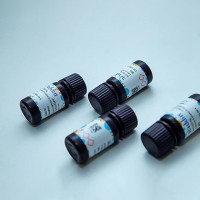Superoxide Production in the Islet of Langerhans Detected by the MCLA Chemiluminescence Method
互联网
653
It is well known that the superoxide anion radical (O-2 ) is produced in the body as a result of biochemical activities of many cells, such as neutrophils, macrophages, and Kupffer cells (1 ). Production of O-2 is detectable by various methods, including cytochrome-c oxidation (1 ), nitroblue tetrazolium (NBT) staining, and chemiluminescence (CL) measurement (2 ). The site and amount of O-2 production is variable with time and readily determined in vivo by applying the CL method. In earlier studies, the CL method was successfully applied for detection of O-2 generation at a tissue level in the lung (3 ), liver (4 ), pancreas (5 ), heart (6 ), and brain (7 ). Combined with video imaging techniques, the CL method makes it possible to analyze O-2 generation at a high spatial resolution, sometimes even at a single cell level. In this chapter, we describe the CL method applied to O-2 detection from the islets of Langerhans in the perfused pancreas.








